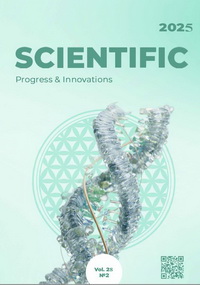Clinical evaluation of the effectiveness of dental fillings in dogs
DOI:
https://doi.org/10.31210/spi2025.28.02.35Keywords:
dogs, dental pathology, pulp diseases, tooth filling, root canal therapyAbstract
The high incidence of dental disease in dogs and the lack of consistently positive outcomes in the treatment of teeth with pulp inflammation justify the need for the development and clinical implementation of modern techniques aimed at tooth preservation. The aim of this study was to investigate the prevalence of dental diseases accompanied by pulpitis and the effectiveness of treatment in such patients. Modern endodontic treatment techniques were applied using various filling materials. A thorough dental examination of 42 dogs was carried out using all the necessary modern diagnostic methods. After treatment, pain response was monitored using the Glasgow Composite Measure Pain Scale (CMPS), which showed that in 4.76 % of cases, additional analgesia was required following treatment of traumatic dental lesions. Additionally, animals with pronounced pain responses received anti-inflammatory and antimicrobial therapy to prevent complications. Based on statistical analysis, dental diseases were more common in small-breed dogs aged 6 to 10 years. The main indications for root canal filling were traumatic crown damage (40.48 %), periapical infection (26.19 %), and dental caries (19.05 %). Dental diseases accompanied by pulpitis were most frequently diagnosed in male Yorkshire Terriers (26.19 %) and mixed-breed dogs weighing up to 6 kg (21.43 %), with a peak incidence between 6 and 10 years of age. A comparative analysis of filling materials was conducted based on the following parameters: quality, cost, ease of use, and general characteristics. Composite material demonstrated the best stability and durability and can be used as a permanent filling under conditions of moderate load on the tooth. Budget cements showed a tendency toward mechanical damage, unaesthetic appearance, and the presence of harmful impurities. The research results confirm the importance of a comprehensive approach, the use of only high-quality and safe medicinal products, and communication with pet owners as integral components of successful endodontic treatment.
Downloads
Published
How to Cite
Issue
Section
License
Copyright (c) 2025 Scientific Progress & Innovations

This work is licensed under a Creative Commons Attribution 4.0 International License.

 Creative Commons Attribution 4.0 International Licens
Creative Commons Attribution 4.0 International Licens